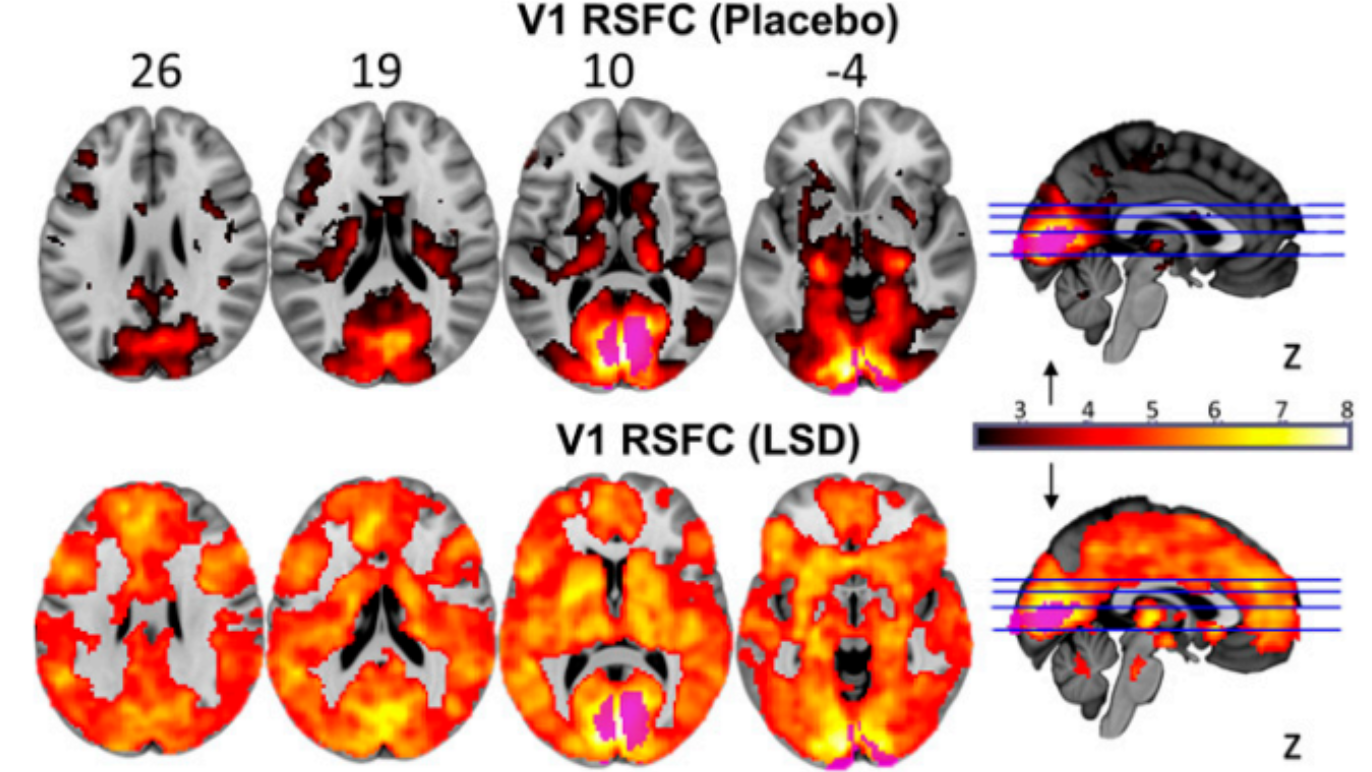

Before LSD was outlawed in the late 1960s, scientists had been testing the drug as a treatment for addiction or mental illness. In recent years, the restrictions on the drug have loosened a bit, allowing researchers to keep studying the beneficial uses of LSD with the added benefit of modern analytical technology. Now researchers have taken new types of images of brains on LSD, illuminating the parts of the brain most affected by it. This could lead them to new ways to treat mental illness or even the seat of consciousness in the brain. The study was published today in PNAS.
The researchers used three different neuroimaging techniques: arterial spin labeling, which measures how water in the blood interacts with water in tissues; changes in blood flow and oxygen content called BOLD signals; and magnetoencephalography, a technique that measures tiny electromagnetic fields in the brain. In the study, they injected 20 patients with a dose of LSD or simple saline as a control. The volunteers were also asked to subjectively rate their hallucinations and altered states of consciousness several times in the hours after receiving the injection.
The researchers found that LSD increased the activity in the visual cortex, which makes sense in light of the hallucinations the drug induces. It also lowered the activity of alpha waves, which correspond to feelings of relaxed alertness, a shift to which the researchers correlate patients’ dissociated feelings of self and uninhibiting the more imaginative elements of hallucinations. Overall, the activity of the brain seemed stronger in patients who had been given the LSD.
LSD could be used as a treatment for psychiatric conditions, the researchers write, because the pattern of brain waves of patients with those disorders become too rote, too steady—“core behaviors become automated and rigid,” they write. Psychedelics like LSD have a tendency to jolt the brain out of its usual routine, which might help the brain get back to normal. “Consistent with their ‘entropic’ effect on cortical activity, psychedelics may work to break down such disorders by dismantling the patterns of activity on which they rest,” they write.
The researchers also see a more philosophical side of their findings: understanding hallucinogens’ neurological effects might reveal where consciousness resides in the brain, resolving a question that scientists and philosophers have long debated.
There’s little doubt that LSD is gaining popularity as a possible treatment for conditions like addiction, or even to help people perform better at work. And though LSD’s potential as a treatment for psychiatric conditions been explored in the past, scientists’ understanding of those diseases has become much more sophisticated in the past 40 years. In future studies the researchers hope to look more closely at the effect of alpha waves , their relationship to activity in the visual cortex, and new ways that psychedelics could be used to disrupt pathological patterns of brain activity.
